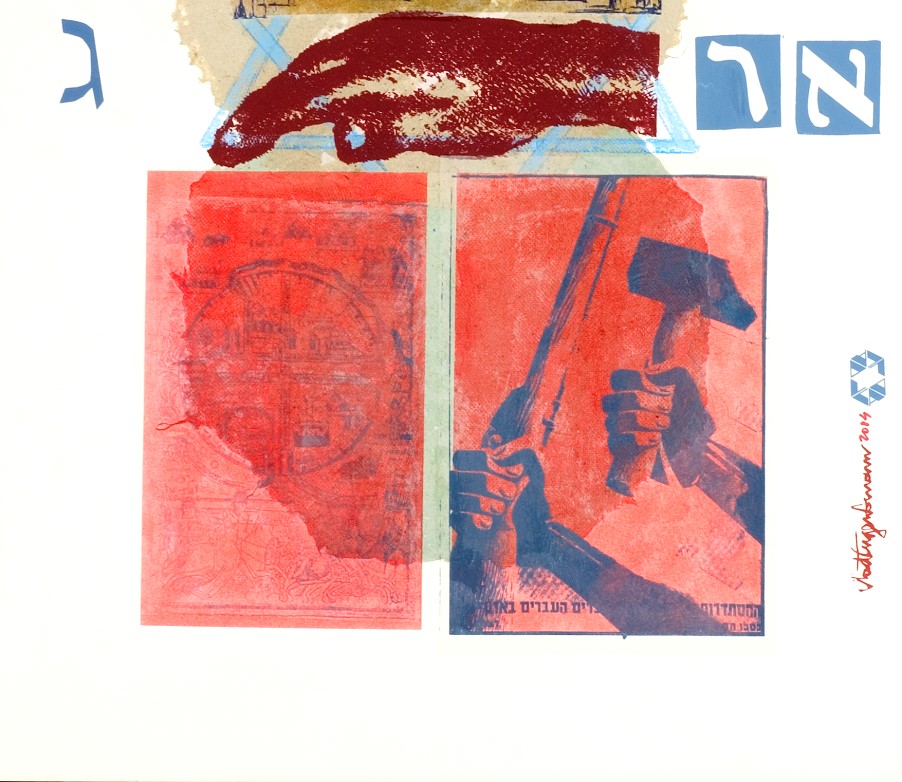The Tablets of Āl-Yāḫūdu
Yahwistic names, socioeconomic ascent and ethnically marked marriage
DOI:
https://doi.org/10.35699/1982-3053.2022.41388Keywords:
Judahites, Material Culture, Exile of JudahAbstract
The texts of Āl-Yāḫūdu are sources written by Babylonian scribes in Akkadian cuneiform, which documented the activities of the Judaites, especially their business transactions in the countryside. The tablets cover 95 years of the material life of the Judaites settled in villages, dating from 572-477 B.C.E. In this way, it became possible to study four generations of individuals who resided on the banks of the rivers of Babylon. In the corpus of Āl-Yāḫūdu, we can research information regarding the preservation of Yhawistic names, the socioeconomic rise in the third generation of the deportees, and the marriage in this village that took place between two ethnicities.
Downloads
References
ABRAHAM, K. West Semitic and Judean Brides in Cuneiform Sources from the Sixth Century BCE. New Evidence from a Marriage Contract from Āl-Yāḫūdu Archiv für Orientforschung, 51, p. 98–219, 2005-2006.
ABRAHAM, Kathleen. An Inheritance Division among Judeans in Babylonia from the Early Persian Period, p. 206–221 in M. Lubetski (ed.). New Seals and Inscriptions, Hebrew, Idumean and Cuneiform. Hebrew Bible Monographs 8. (Sheffield), 2007.
ALSTOLA, Tero. Judeans Merchants in Babylonia and their Participation in Long Distance Trade. Welt des Orients, n. 47, 2017. p. 25-51.
BEAULIEU, P. Yahwistic Names in Light of Late Babylonian Onomastics. In: LIPSCHITS, Oded; KNOPPERS, N; OEMING, Manfred (ed.). Judah and the Judeans in the Achaemenid Period Negotiating Identity in an International Context. Winona Lake: EISENBRAUNS, p. 267-277, 2011.
BERLEJUNG, Angelika. "Social Climbing in the Babylonian Exile", in A. Berlejung – A. M. Maeir – A. Schüle (ed.). Wandering Arameans. Arameans Outside Syria: Textual and Archaeological Perspectives (Leipziger altorientalistische Studien, 5; Wiesbaden: Harrassowitz, 2017) 101-124.
BERLEJUNG, Angelika. New Life, New Skills, and New Friends in Exile: The Loss and Rise of Capitals of The Judeans in Babylonia, 2016.
DELORME, J. The Āl-Yāhrūdu Texts (ca. 572-477 BCE): A New Window into the Life of the Judean Exilic Community of Babylonia. Indiana: Purdue University Press, 2019.
GOLUB, M.; ZILBERG, P. From Jerusalem to Āl-Yāḫūdu: Judean Onomastic Trends from the Beginning of the Babylonian Diaspora. Journal of Ancient Judaism, 9. Jg., 312–324, ISSN: 1869-3296.
HACKL, Johannes. Babylonian Scribal Practices in Rural Contexts: A Linguistic Survey of the Documents of Judean Exiles and West Semites in Babylonia (CUSAS 28 e BaAr 6)”, in A. Berlejung – A. M. Maeir – A. Schüle (ed.). Wandering Arameans. Arameans Outside Syria: Textual and Archaeological Perspectives (Leipziger altorientalistische Studien, 5; Wiesbaden: Harrassowitz, 2017) 125-140.
HOROWITZ, W., GREENBERG, Y. and ZILBERG, P. By the Rivers of Babylon: Cuneiform Documents from the Beginning of the Babylonian Diaspora, Jerusalem: The Bible Lands Museum Jerusalem and Israel Exploration Society.
JOANNÈS, F. e LEMAIRE, A. Contrats babyloniens d’époque achéménide du Bît-Abî râm avec une épigraphe araméenne, Revue d’assyriologie et d’archéologie orientale, 90: 41–60; Trois tablettes cunéiformes à onomastique ouest-sémitique (collection Sh. Moussaïeff), Transeuphratène 17: 17–34, 1996.
JURSA, M. Aspects of the Economic History of Babylonia in the First Millennium BC. Münter : Ugarit-Verlag, 2010.
JURSA, M. In M. Gehler; R. Rollinger (ed.). Imperien und Reiche in der Weltgeschichte: Epochenübergreifende und globalhistorische Vergleiche, Wiesbaden, p. 121-148, 2014.
LAMBERT, W. G. A Document from a Community of Exiles in Babylonia. p.201-205 in M. Lubetski (ed.). New Seals and Inscriptions, Hebrew, Idumean and Cuneiform, Sheffield, 2007.
PEARCE, Laurie E.; WUNSCH, Cornelia. Documents of Judean Exiles and West Semites in Babylonia in the Collection of David Sofer. Cornell University Studies in Assyriology and Sumerology 28. Bethesda: CDL: Press, 2014.
PEARCE, Laurie. “Judean”: A Special Status in Neo-Babylonian and Achaemenid Babylonia? In: LIPSCHITS, Oded; KNOPPERS, N; OEMING, Manfred (ed.). Judah and the Judeans in the Achaemenid Period Negotiating Identity in an International Context. Winona Lake: EISENBRAUNS, p. 267-277, 2011.
ROTH, M. T. Law Collections from Mesopotamia and Asia Minor, SBLWAW 6. Atlanta: SBL, 1995.
ROTH, M.T. She Will Die by the Iron Dagger: Adultery and Neo-Babylonian Marriage. JESHO 31 (1988): 186-206.
STOLPER, Matthew W. Entrepreneurs and Empire: The Murašû Archive, the Murašû Firm, and Persian Rule in Babylonia. M. W. Stolper. PIHANS 54. Leiden, 1985.
WAERZEGGERS, Caroline. Changing Marriage Practices in Babylonia from the Late Assyrian to the Persian Period. Journal of Ancient Near Eastern History. Disponível em: https://doi.org/10.1515/janeh-2020-0006, 15 set. 2020, p. 1-31.
WAERZEGGERS, Caroline. Locating Contact in the Babylonian Exile: Some Reflections on Tracing Judean-Babylonian Encounters in Cuneiform Texts In GABBAY, Uri. SECUNDA, Shai (ed.). Tübingen: Mohr Siebeck, 2014, p. 131-146.
WUNSCH, Cornelia. Glimpses on the Lives of Deportees in Rural Babylonia. In BERJELUNG, Angelika; STRECK, Michael P. Harrasowitz. Verlag: Wiesbaden, 2013.
ZADOK, Ran. Encounters by the Rivers of Babylon. In: GABBAY, Uri. SECUNDA, Shai (ed.). Tübingen: Mohr Siebeck, 2014, p. 109-129.
Downloads
Published
How to Cite
Issue
Section
License
Copyright (c) 2022 Arquivo Maaravi: Revista Digital de Estudos Judaicos da UFMG

This work is licensed under a Creative Commons Attribution 4.0 International License.
Os direitos autorais pertencem exclusivamente aos autores. Os direitos de licenciamento utilizados pelo periódico é a licença Creative Commons Attribution 4.0 (CC BY 4.0): são permitidos o compartilhamento (cópia e distribuição do material em qualquer meio ou formato) e adaptação (remix, transformação e criação de material a partir do conteúdo assim licenciado para quaisquer fins, inclusive comerciais.






